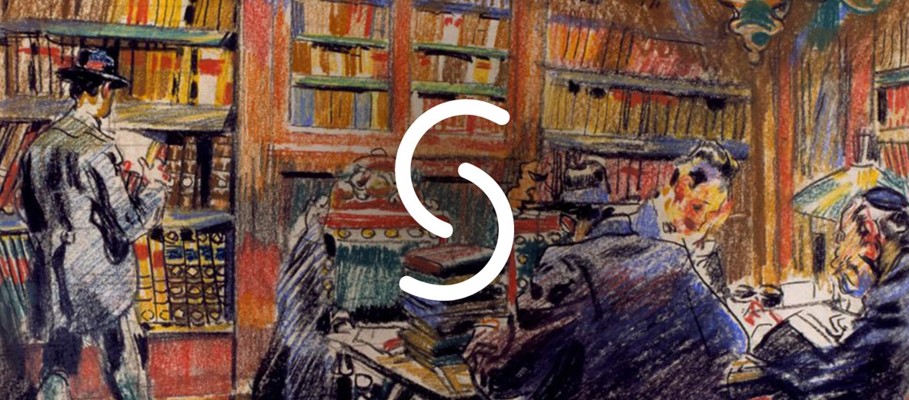Archivo Histórico - Ayuntamiento de Segorbe
Item
-
Country
-
ES
-
Name of institution (English)
-
Segorbe Municipal Archive
-
Language of name of institution
-
spa
-
Contact information: postal address
-
Cronista Jaime Faus s/n, 12400 Segorbe (Castellón)
-
Contact information: phone number
-
0034 964713751
-
Contact information: email
-
centrocultural@segorbe.es
-
Title (English)
-
Historical Archive - Municipality of Segorbe
-
Title (official language of the state)
-
Archivo Histórico - Ayuntamiento de Segorbe
-
Language of title
-
spa
-
Creator / accumulator
-
Ayuntamiento de Segorbe
-
Date(s)
-
1286/1939
-
Language(s)
-
ara
-
cat
-
lat
-
spa
-
Extent
-
1,000 linear metres (5,392 boxes)
-
Type of material
-
Textual Material
-
Physical condition
-
Good
-
Scope and content
-
The Municipality of Segorbe fonds is composed of two sub-fonds: the Administrative and the Historical. Regarding the Administrative sub-fonds, the Segorbe Municipal Archive contains documentation emanating from the city council from 1920 to the present. The Historical sub-fonds holds records from the 13th century. Among the most important documents are examples of great interest, such as a luxury 16th-century Koran and the so-called "Libro del Justicia Sancho Navarro" (Sancho Navarro's justice book), which is the oldest document of this collection, dating from 1286. Other pieces of interest are numerous parchments from the 14th century containing administrative records, letters, among other kinds of records.
This collection includes documentation regarding the history of the local Jewish community. Two examples are the following:
Administración del Justicia, Letres, Sig. 3059/170: “Libro de la correspondence del justicia de la ciudad de Segorbe” (Book of the correspondence of the justice of the city of Segorbe) from the year 1371, which includes several references to Jews living in Sergobe during the Middle Ages.
(Documentación Diversa, Otros, Sig. 3071/215: “Libro de la escribania de don Federico de Aragón, Conde de Luna” (Book of the office by don Federico de Aragón, Count of Luna), written between 1419 and 1425 in Castilian-Aragonese, Valencian, and Latin, whose authorship is attributed to the notary Pere de Capdevila; it reports about two dozen Jews who lived in the village of Belchite, in the province of Zaragoza.
-
Archival history
-
The first organisation of the municipal archive of Segorbe dates back to 1699, when its records were classified and arranged. In 1752, Juan Mañes concluded the arrangement of the archive, following royal demands. These efforts for the organisation and classification of municipal records continued for some time, but, throughout the 19th century, the archive fell again into the most complete oblivion. In 1925, Don Luis Revest i Corzo produced a brief inventory of the archive but did not undertake a reorganisation of its holdings.
In 1985, the Municipal Archive began a new phase of its history, with a new space in which the research room coexisted with two cabinets where the historical documentation was deposited. In 1989, due to several outbreaks of termites and the growth of the archival holdings, the Municipal Archive had to change its headquarters. The transfer to the Centro Cultural Olga Raro was concluded in 1995.
-
(source: Censo-Guía de Archivos de España e Iberoamérica)
-
Administrative / Biographical history
-
After being part of Roman and Visigothic Hispania, Segorbe's first period of splendour came with Muslim domination. It became the residence of Zayd Abu Zayd, the last Muslim king of the Taifa of Valencia, who capitulated to the Aragonese King Jaime I on October 9, 1238. In 1245, Segorbe was definitively occupied by the Christians. Since then, the importance of Segorbe has increased until it became the residence of King Martín I of Aragon in the 14th century, following his marriage to María de Luna from Segorbe.
In 1435, Segorbe passed from being part of the royal estate into the hands of the Infante Enrique, following the creation of the "Señorío" of Segorbe by Alfonso V of Aragon. In 1459, Juan II of Aragon granted it the title of ducal city. The first Duke of Segorbe was the Infante Enrique de Aragón. In the 17th century, this title passed into the hands of the Dukes of Medinaceli.
In the 18th century, the city experienced a great cultural and economic boom that lasted until the 19th century, when it came to disputing the capital of the province with Castellón de la Plana. During the Peninsular War (1807-14), it was occupied by the French, headed by Marshal Suchet. Later, both the Carlist Wars (1833-76) and the Spanish Civil War (1936-39) caused serious damage to the city's cultural heritage.
From the 19th century onwards, a period of decline began, but its population remained stable at 7,000-8,000 inhabitants. The city lost importance due to the rise of Castellón de la Plana and the urban area formed on the coast of the province. However, the beginning of the 21st century has seen important demographic growth and the transformation of the town into one of the main inland tourism destinations in the Valencian Community.
-
(source: Censo-Guía de Archivos de España e Iberoamérica)
-
Author of the description
-
Rui Queirós de Faria, 2021
Linked resources
Items with "Collections (official language of the state): Archivo Histórico - Ayuntamiento de Segorbe"
| Title |
Class |
| Archivo Municipal de Segorbe |
|
